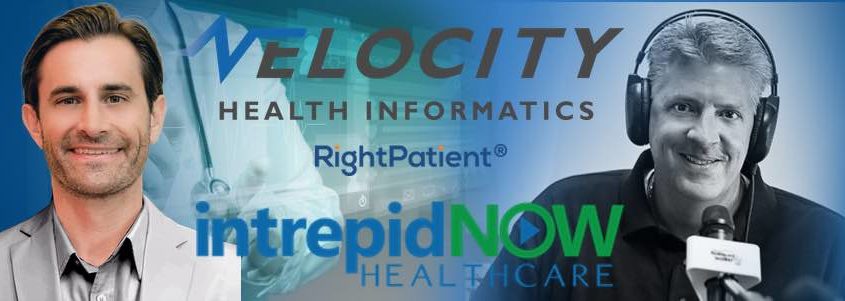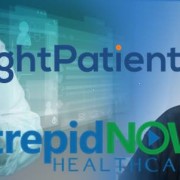
We interviewed Jim Bialick, President of The Patient Safety Movement to discuss the topic of patient safety in healthcare.
Patient safety is a topic intertwined with so many policies and procedures in healthcare, many considering it to be the “cornerstone” to deliver quality care. After all, any healthcare organization can be equipped with the latest and most cutting edge care delivery technologies and staff with deep experience in healthcare delivery, but easily fail to recognize the impact on providing holistic patient safety, no matter where a patient falls along the continuum.
Many organizations have materialized with the sole purpose of advancing patient safety in healthcare, but none perhaps more impactful or relevant than The Patient Safety Movement, a Foundation focused on collaborating and breaking down information silos that exist between hospitals, medical technology companies, the government, and other stakeholders that enourages the sharing of data that can identify at-risk patients before they’re in danger and provides specific, actionable solutions that healthcare professionals can implement today to help realize the goal of zero preventable deaths by the year 2020.
We had the pleasure of interview Jim Bialick, President of the Patient Safety Movement for first hand insight on their goals and mission, information about their forthcoming Patient Safety Summit in January 2016. Plus, we had the chance to ask Jim his opinion on the use of biometrics for patient identification in healthcare, the state of patient data integrity in healthcare, and insight into the impact of duplicate medical records. Here is a list of questions covered during our podcast with Jim Bialick and The Patient Safety Movement:
1. What can you tell us about The Patient Safety Movement mission and goals? What steps are you taking and what accomplishments have been realized since you began the movement?
2. I noticed that the Patient Safety Movement is sponsoring the “Patient Safety Movement Foundation Innovation Competition” to encourage advocates to submit innovations to advance the goal of zero preventable deaths by 2020. What can you tell us about the motivation behind creating this award and how you feel it will advance the patient safety initiative?
3. Talk to me for a minute about the upcoming Patient Safety, Science, and Technology Summit in January 2016. What is the significance of this event, why should people attend, and what one message do you hope attendees walk away with?
4. Improving and sustaining patient data integrity in healthcare has gained strong momentum due to its effect on the ability of clinicians to provide accurate, cost effective care to a patient. Due to the increase in patient touchpoints (portals, mHealth apps, kiosks, smartphones) from the rapid digitization of healthcare that provide new ways to access personal health information and receive services, what additional patient safety concerns have you worried that could potentially undermine patient data integrity?
5. It’s often said that accurate patient identification in healthcare is one of the key pillars of protecting patient safety throughout the care continuum. Considering the fact that many healthcare organizations still rely on outdated and ineffective patient matching methodologies, what new patient identification technologies do you see as promising to improve patient identification accuracy and patient data integrity?
6. The growth of biometrics for patient identification presents an opportunity for healthcare organizations to modernize authentication protocols to improve patient safety, eliminate duplicate medical records, and prevent medical identity theft and fraud at the point of service. We recently conducted a survey of 1,067 patients about infection control policies in healthcare and preferences regarding biometric technology and found that 70% prefer a non-contact device. Based on your experience, why do you think this is the case? If evaluating a contact dependent device for patient ID, what would providers need to consider in terms of hygiene and infection control? What are the patient safety risks of using a contact dependent vs. non-contact biometric modality (e.g. palm vein vs. iris recognition) for patient ID in healthcare from an infection control perspective?
7. In The Patient Safety Movement mission statement, you talk about “breaking down the silos” in healthcare. Can you please explain your interpretation of “breaking down the silos” and why do you feel this is an important component to advance the initiative? What distinct advantage does coalescing the fragmented and disparate entities in healthcare have to advance patient safety in healthcare?
8. Why are hospitals allowed to operate under the radar with issues such as duplicates and overlays that pose such a significant risk to patient safety? Who governs this and why isn’t such an industry-wide epidemic made more public so that patients and regulators are made aware? Should there be an industry level of transparency where it is mandated that a hospital’s exposure to such issues is made public, constantly monitored, penalized and regulated?
For a full version of the podcast, please click here.
Our thanks to Jim for his time and wisdom on the topic of patient safety in healthcare! Follow The Patient Safety Movement on Twitter, and please “like” their Facebook page.
Have an idea for a podcast? Drop us an email at: jtrader@rightpatient.com! For a full list of our podcast library, please visit our podcast page.






 Jeremy has worked in the biometrics industry for nearly a decade and has real world experience with fingerprint, palm vein, finger vein, iris and face recognition technologies. He currently oversees the RightPatient™ Healthcare division of M2SYS Technology, including sales, business development and project management. Before taking over the Healthcare unit, Jeremy spearheaded the growth of the core biometrics division, working closely with Fortune 500 clients like ADP, JP Morgan & BAE Systems to implement biometrics in large identity management projects.
Jeremy has worked in the biometrics industry for nearly a decade and has real world experience with fingerprint, palm vein, finger vein, iris and face recognition technologies. He currently oversees the RightPatient™ Healthcare division of M2SYS Technology, including sales, business development and project management. Before taking over the Healthcare unit, Jeremy spearheaded the growth of the core biometrics division, working closely with Fortune 500 clients like ADP, JP Morgan & BAE Systems to implement biometrics in large identity management projects.















